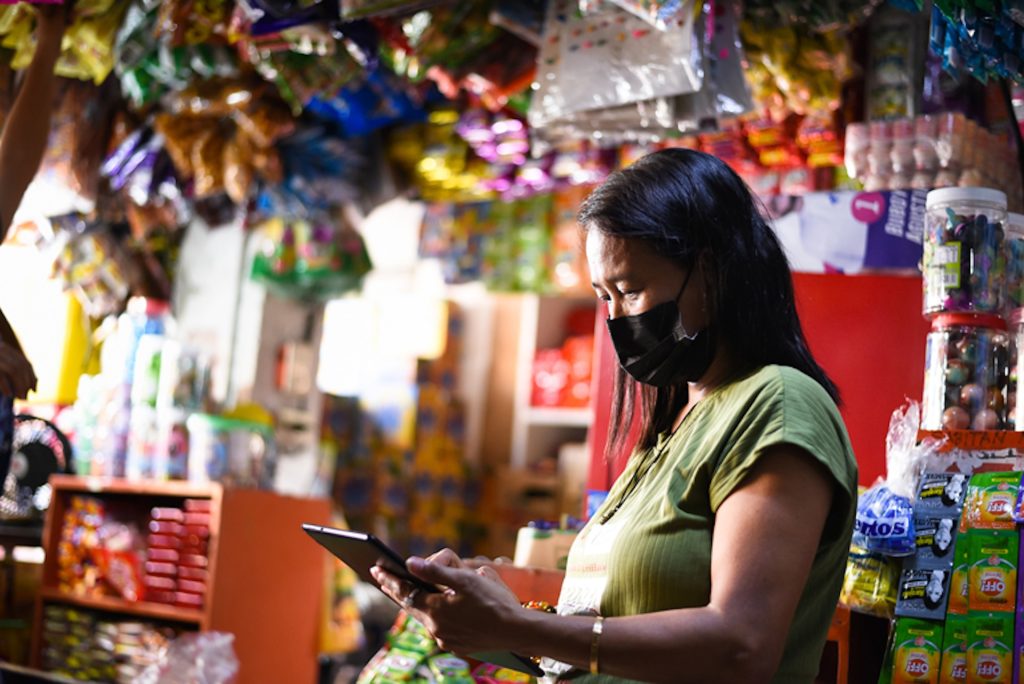
Concepcion Gears Up Go Negosyo Projects with PH’s Biggest Business Groups
February 16, 2024Go Negosyo Tourism Summit 2024
February 29, 2024
The Sari-Sari Store Disruption
If there is one word that has loomed over the business world in the last decade, it is the word “disruption.” The disruptors have been among us way before the 2010s, but only intensified and gained speed as technology enabled them.
We saw it in media, where the internet and its offspring, social media, challenged the gatekeeping of news outlets and the ROI provided by traditional advertising. We saw it in shopping, transport and booking apps when they gave options to the commuting public and an alternative for shoppers and sellers alike. Last year, artificial intelligence started disrupting how we work. And now we might see disruption in Philippine retail with the entrance of the hard-discounter store Dali.
It is not to be confused with ALDI, the decades-old German discount store which, come to think of it, is an anagram of Dali. While it shares with ALDI the same DNA of offering food and non-food groceries at heavily discounted prices, ALDI operates in Europe and North America, whereas Dali has decided to target Southeast Asia. More specifically, it has chosen the Philippines – where the sari-sari store reigns supreme – for its initial rollout. I am told there are already more than 500 stores now, mostly in South Luzon and some in the Greater Manila Area. The target is to have 2,000 stores nationwide by 2026.
Of course, the first thing that came to mind is, how will this affect sari-sari stores, the very symbol of micro-entrepreneurship in the Philippines? For those who may not be familiar with sari-sari stores, these are neighborhood retailers that sell common household necessities and fast-moving consumer goods, both food and non-food, for a small markup. They sell “tingi” or micro-retail quantities (imagine buying one or two sticks of cigarettes), a phenomenon that fuels the sachet business in the country and even inspired retail airtime loads for mobile phones.
On the face of it, the lower prices offered by Dali stand to benefit Filipino consumers. Imagine getting a bar of soap for 10 to 12 percent less than what you would pay at the grocery store. Those small savings add up, and in a month a consumer might have enough leftover cash to cover his electricity bill.
Hard discounters can do this because while they sell a wide range of goods, they offer few choices when it comes to brands. In some cases, the brands you would find in hard-discount stores are different from the ones you would find anywhere at all. These are not fakes. Under special agreements with manufacturers, they engage in what we call “toll packing” where the manufacture of the product is outsourced to factories that already can produce the goods to the specifications that fit the targeted pricing of the hard-discount store. Manufacturers simply tweak things like the quantity of the product or a specific ingredient.
Not all manufacturers will agree to toll packing because it requires investment in retooling equipment and processes. Some agree to supply Dali – without altering their product at all – because of the increased visibility and more efficient distribution to the smaller communities not served by their normal channels. They are also assured of more efficient handling of the goods, resulting in fewer chances of items being returned due to mishandling or spoilage.
Down the line, the distributors might find it easier to handle smaller SKUs (stock-keeping units, or the specific items in the inventory) and manage the narrower assortment. They will, however, have a bit of explaining to do with their old customers as to why they can sell at lower prices to Dali.
In addition to sari-sari stores, hard-discount stores might also end up competing with the minimarts. Small and medium enterprises like these are often overlooked in terms of support. They are also at that awkward age where they can either experience a growth spurt or remain stunted. The way that MSMEs lift the economy is for micros to become small, small to become medium and medium to become large, so it is also important to look out for them.
Of course, this is all armchair analysis. There is little data yet to establish the effect of hard discounters on existing retailers.
What is sure is that it’s going to be a tough balancing act. For a consumer-driven economy like ours, consumer welfare should be the foremost concern. But while the consumer must remain king, we must find a way to help the sari-sari stores. It doesn’t make sense to prevent consumers from getting cheaper goods from the hard-discount stores, just as it doesn’t make sense to reject the benefits offered by AI.
This is where upskilling and upscaling will help. It’s back to Marketing 101: Differentiation and Positioning. What do hard discounters lack on their shelves? What service do people look for? Competing on price may not be the best tactic because sari-sari stores are up against a behemoth here: “mahaba ang pisi,” so to speak. Instead, sari-sari stores can leverage on the overflow of customers from hard-discounters and serve customers who insist only on their preferred brands.
Supply chain companies, meanwhile, can explore little-known brands that have competitive value and offer those to sari-sari stores, while manufacturers can invest more in building brand loyalty and maintaining value for their customers by finding more efficient ways to bring down costs.
The goal is to ensure that the sari-sari stores are prepared; upskill and reskill them, and find a way to make them more competitive. Disruption has a way of forcing systems to do better. Let’s hope it happens with the sari-sari stores and the whole ecosystem that supports them.
Originally Published in Philippine Star

2/F RFM Corporate Center, Pioneer cor. Sheridan Sts. Mandaluyong City, Metro Manila, Philippines

